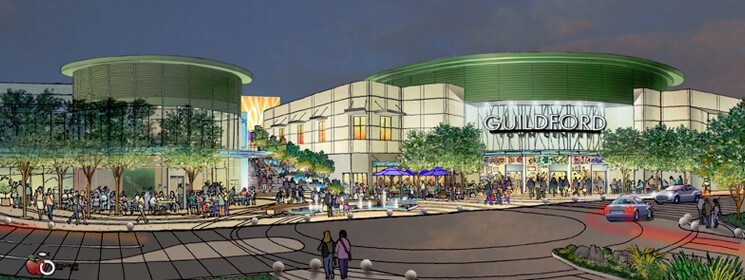Exploring the truth about light rail transit: why it will be neither economic nor sustainable for the City of Surrey.
- Reality Check
-
Daryl DC (SfS Founder)
- September 26, 2011
The City of Surrey’s recent light rail promotional video certainly makes light rail seem like an attractive option for the City of Surrey. However, looking beyond this video at the underlying facts and limitations shows that this may not be the case, and that light rail may well end up being a terrible choice for the City of Surrey.
This article focuses on 104 Avenue, the busy transportation corridor between City Centre and Guildford that is shown in the video. The video claims that light rail will increase economic development and improve quality of life for residents, but this is unquestionably false.

Massive congestion and cuts to local bus service
Narrowing a corridor that carries 33,000 vehicles daily (2009 average [5]) to a single lane in each direction [6] will cause massive congestion in the Guildford area. This will unquestionably make living in the Guildford in the area worse, not better.
Among the potentially affected transit services is a new rapid bus spur to Surrey Central Station from Walnut Grove—which is planned to be introduced in 2013 and utilize 104 Avenue—in the South of Fraser Area Transit Plan. TransLink representatives at a recent presentation at the Guildford Recreational Centre about Moving Forward 2012 (Sept 14 2011) were unable to rule out the inability to continue operating the RapidBus on 104 Avenue, should light rail be introduced [7].
With local bus service also rendered inoperable by the congestion, all Surrey Central-Guildford traffic has to be shouldered by a light rail transit line supplemented by buses rerouted down undesignated side streets. This could result in an unavoidable need for all riders to transfer onto the light rail line at Guildford, to finish their trip to Surrey city centre. That extra transfer will result in significant line-ups and pass-ups—a situation no different from the situation that can be seen today at Surrey Central Station’s bus loop during the afternoon rush hour.
Rapid growth in Guildford will increase traffic pressure
When I talked to City of Surrey staff about this issue at the same meeting, they pointed to decreasing traffic levels and the proposed S.F.P.R. (South Fraser Perimeter Road) as an alternate route for cars and trucks that utilize 104 Avenue.
However, the South Fraser Perimeter Road will be a city bypass (much like the Highway 10/Langley Bypass in Langley), and many of the trips that happen on it will not be trips currently made via 104 Avenue between City Centre and Guildford/Highway 1. Instead, the S.F.P.R. will more likely displace crosstown traffic along the Highway 10, 96 Avenue, and 88 Avenue corridors.
This can be proven by observing traffic volumes measured in 2009 [5]; although the traffic congestion on 104 Avenue seems most apparent east of 152 Street today, this section of 104 Avenue actually carries fewer vehicles daily than the sections between Guildford and Surrey Central. Traffic levels on 152 Street south of 104 Avenue also increase.
In fact, due to the growth of Surrey City Centre as well as the recent construction commencement for the second phase expansion of the Guildford Mall (which will make it the second largest mall in British Columbia) [8], traffic levels on 104 Avenue are most likely to go in a totally different direction: up.

Minimum additional cost for SkyTrain
Many people are using rough ballparks of $100 to $110 million per kilometre to describe the costs of building SkyTrain, likely derived from the Evergreen Line and Canada Line. However, these costs cannot be reasonably compared to the cost of expanding the SkyTrain in Surrey. The Canada and Evergreen lines both involve underground sections, which are significantly more expensive to construct—neither of which will be required in Surrey, where lines will be built utilizing an elevated or at-grade construction.
To illustrate this, the 1994 extension of SkyTrain into Surrey from Scott Road to King George Station cost just $65 million per km to build (in 2011 dollars) [9][10][11][12]. To date, this section has been the least expensive SkyTrain extension to ever have been built. The Millennium Line (2002), which is also mostly elevated, was implemented at a similar total cost of $67 million per km (in 2011 dollars) [13].
TransLink recently estimated the total cost to implement a 10-kilometre at-grade light rail transit line travelling between Guildford Town Centre, Surrey Central, and Newton Town Centre at $800 million (in 2010 dollars) [14], or $80 million per km. This figure likely excludes additional capital cost required to improve parallel east-west roads between Guildford and Surrey Central such as 100 Avenue, or a widening of 104 Avenue so that it may retain 4 traffic lanes (2 in each direction) with LRT.
SkyTrain for Surrey estimates that a SkyTrain line along a similar alignment would cost as low as approximately $950 million. This is a small premium to pay for much better rapid transit service for Surrey, which will cost less to operate in addition to costing much less to start up.

Light rail is not the way forward
SkyTrain has a better reliability record than conventional light rail systems around the world. (SkyTrain delivers a better than 99% service reliability [15] and records over 110 million boardings a year [16]). It also has more capacity to handle future ridership growth, and can reduce congestion while increasing overall transit service.
City Council’s push for light rail was jump-started after they visited Portland, OR. However, as we recently revealed, the Portland MAX light rail has failed to do what we need rapid transit to do in Surrey. The problems inherent to light rail are often overlooked by transit riders and non-riders alike, and poor consideration and planning may restrict our growth and future.
Transportation is one of the most pressing issues for the City of Surrey. The right choice for the City of Surrey’s transportation future needs to be made—so let’s build the most economic and sustainable system available for our benefit today, and our children’s benefit tomorrow.
After all, “The Future Lives Here”.
About SkyTrain for Surrey
SkyTrain for Surrey is the community organization that advocated for the Surrey-Langley SkyTrain extension. From our beginnings as a petition calling for the scrapping of a street-level LRT proposal, we grew into a community of like-minded folk, taking on various projects such as making SkyTrain an election issue in 2018 as a registered advocacy group. SkyTrain for Surrey continues to call for high-quality transit infrastructure projects serving Surrey, Delta and the Langleys.
Media Contact:
Daryl Dela Cruz – Founder, SkyTrain for Surrey
Phone: +1 604 329 3529, [email protected]
